
Precision Agriculture: Technology To Boost Crop Farming
Precision agriculture systems are dynamically developing management systems. They allow farmers to solve a whole spectrum of problems. At the same time, precision agriculture includes a wide range of tools that growers need to master to get the most out of their production.
Precision agriculture systems are dynamically developing management systems. They allow farmers to solve a whole spectrum of problems. At the same time, precision agriculture includes a wide range of tools that growers need to master to get the most out of their production.
What Is Precision Agriculture?
Precision farming uses modern technologies such as satellite imagery or field mapping to improve crop quality and profitability. Moreover, it optimizes the use of traditional resources. Therefore, this agricultural management system contributes to the development of sustainable agriculture, allowing to solve both economic and ecological problems, which are becoming more acute.
Among the technologies used in such a system are GPS, drones, and satellite images. Based on this data, farmers receive information on all key issues: crop status, weather forecasts, environmental changes, etc. Also, the important difference between precision farming and traditional agriculture is the ability to manage fields not as a single block but by dividing them into separate areas. Such zoning allows diversifying management decisions for individual field parts: adjusting the fertilizer amount, optimizing technique movement, and using fuel more frugally.
Importance Of Precision Agriculture
Farmers can control all the processes remotely with a precision agriculture system. Even small farms can manage large fields or a group of small areas.
It dramatically improves the efficiency of crops and saves financial costs while increasing production. The last aspect is essential since it seems that precision agriculture technologies are costly at first glance. However, the savings are significantly higher than with traditional agricultural methods in the long run. So, growers can accurately sum the required fertilizer amount, determine effective fertilizer types for a particular area. Moreover, the importance of precision farming technologies is that they improve the planning of agricultural operations for an extended period, adjusting the real-time strategy during force majeure.
Optimizing the soil use preserves its quality, enabling a stable food supply. Therefore, precision farming in agriculture plays an essential part in solving the global problem of hunger.
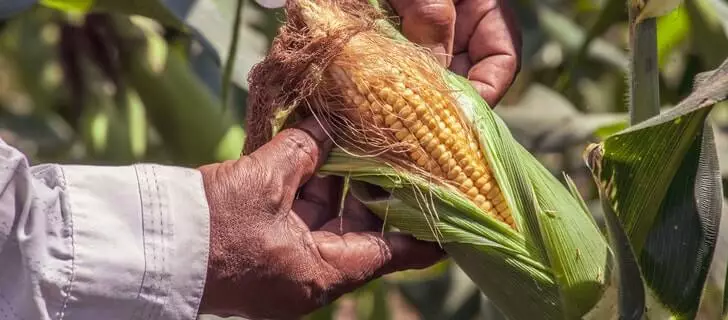
Benefits Of Precision Agriculture
Precision agriculture is helpful for growers and the environment as well. Moreover, these areas are interconnected since environmental degradation worsens conditions for agriculture. Here are just several benefits of such a control system:
- minimizing the cost of materials and resources, like water, seeds, fuel, etc.;
- maintaining soil health by reducing the number of pesticides;
- lowering agriculture’s dependence on weather conditions;
- maximum realization of the genetic potential of the produced crops.
All these advantages of precision farming allow farmers to improve the quality of products significantly and, at the same time, reduce their costs.
EOSDA Crop Monitoring
Offering high-resolution satellite images for fields analytics to monitor crops health remotely!
Precision Agriculture Technologies And Methods
Precision farming requires special equipment and software to collect and analyze all the information. Since precision agriculture technology uses hardware and software, specialists are needed to implement them. However, with further work, farmers can cope on their own. The precision farming technology can be conditionally divided into ground, aerial, and satellite. The former is suitable for production planning, mapping, scouting, and machine control. The two latter are relevant to solving more global problems, for example, real-time yield state analysis from anywhere. It is recommended to mix technologies to obtain objective data.
Global Positioning System (GPS) In Precision Agriculture
GPS refers to ground-based technology permitting growers to gather data with accurate location information in real-time. GPS is suitable for the following tasks:
- mapping of irrigation systems, fields, and roads;
- detection of areas with problem plants;
- soil testing in specific field areas;
- the tractor driving with a parallel steering system;
- VRA for precise seed and fertilizer application.
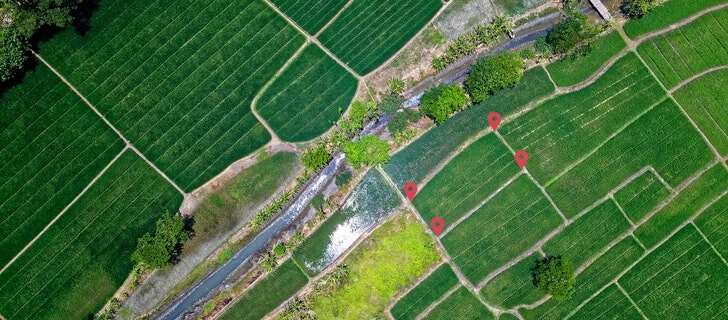
Also, GPS in precision agriculture allows for controlling agricultural machinery. For example, with its help, growers can drive tractors in poor visibility due to rain or fog.
GIS Technology In Precision Agriculture
Geographic Information Systems operate with object details and location data to create maps, including digital ones. For dividing the farm into separate zones, remote sensing is needed. All zones have their characteristics, the analysis of which requires GIS and GPS use. Traditionally, these zones are divided according to a soil type, nutrient availability, soil moisture content, pH rate, and pest infestation.
GIS in precision agriculture permits farmers to view records, such as soil survey maps and plant characteristics traditionally grown in the region. Satellite images and aerial photographs provide additional information. Another handy feature of GIS is analyzing multiple farm management options by comparing and manipulating data layers.
UAVs And Dusters In Precision Agriculture
Aerial technologies for crop management are based on using unmanned aerial vehicles (UAVs). Thus, farmers can monitor the yield’s condition without scouting all fields in person. At first glance, the easiest option is crop dusters because farmers already use them for watering and sowing. They can attach a hyperspectral camera to any agricultural aircraft and record the needed information. However, it will lead to an additional load on crop dusters, which will be involved in addition to the main tasks for crop management. It will lead to faster wear of the devices and additional environmental pollution. In addition, this method means the employment of a qualified pilot.
Using UAVs or drones in precision agriculture is a more progressive solution. They are controlled remotely and consume less fuel. Moreover, precision agriculture drones can analyze the field thoroughly, conducting complex multispectral, thermal, and hyperspectral soil analyses.
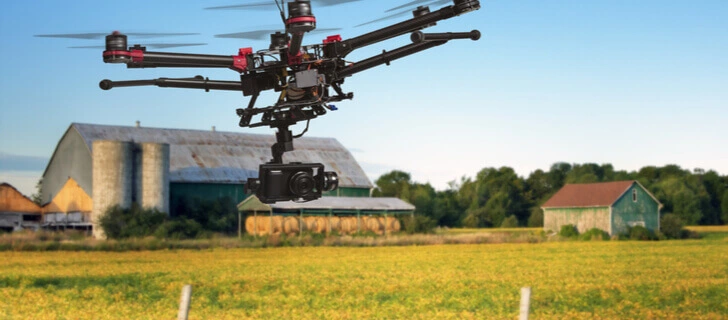
Satellite Remote Sensing In Precision Agriculture
This technology allows growers to observe the yield health using satellite images. They provide up-to-date information on moisture stress, disease, structural anomalies, and nutrient levels. Modern precision agriculture satellite imagery has a high spectral resolution, allowing growers to get the most accurate data.
It is most effective to combine scouting with satellite remote sensing: growers can determine the cause of deviations from the norm. Also, they can use satellite imagery for planning plant treatments and selecting agricultural chemicals.
An essential benefit of this method compared to GPS and UAVs is the absence of additional fuel and labor costs.
Precision Agriculture And Its Application Fields
This agriculture system constantly evolves, permitting growers to optimize production and exploitation of resources. Therefore, farmers can improve soil quality and productivity. Here are the most popular application fields.
VRT In Precision Agriculture
VRT technology allows growers to apply fertilizer, chemicals, seeds, etc. to a different parts of a field depending on their needs.Also, farmers can test the soil for nutrients, such as nitrogen, and feed only those areas that lack certain nutrients.
With variable rate application, precision agriculture requires a differential global positioning system (DGPS) and specialized software. There are several VRT types . The map-based VRT corrects the number of applied fertilizers, pesticides, and other products according to the previously generated area map. The sensor-based VRT examines the soil with sensors in real-time and can help determine nitrogen deficiency. Then the control system estimates the required number of inputs.
As a precision agriculture software, EOSDA Crop Monitoring provides the ability to zone any field based on vegetation indices. A zoned field map can be integrated with VRT to vary the amount of water, fertilizer, seeds, or chemicals on different parts of the field. So, thanks to VRT, farmers can care about plants more effectively, use as many additional resources as needed, save their money, and positively impact the environment, as there is no fertilizer run-off.
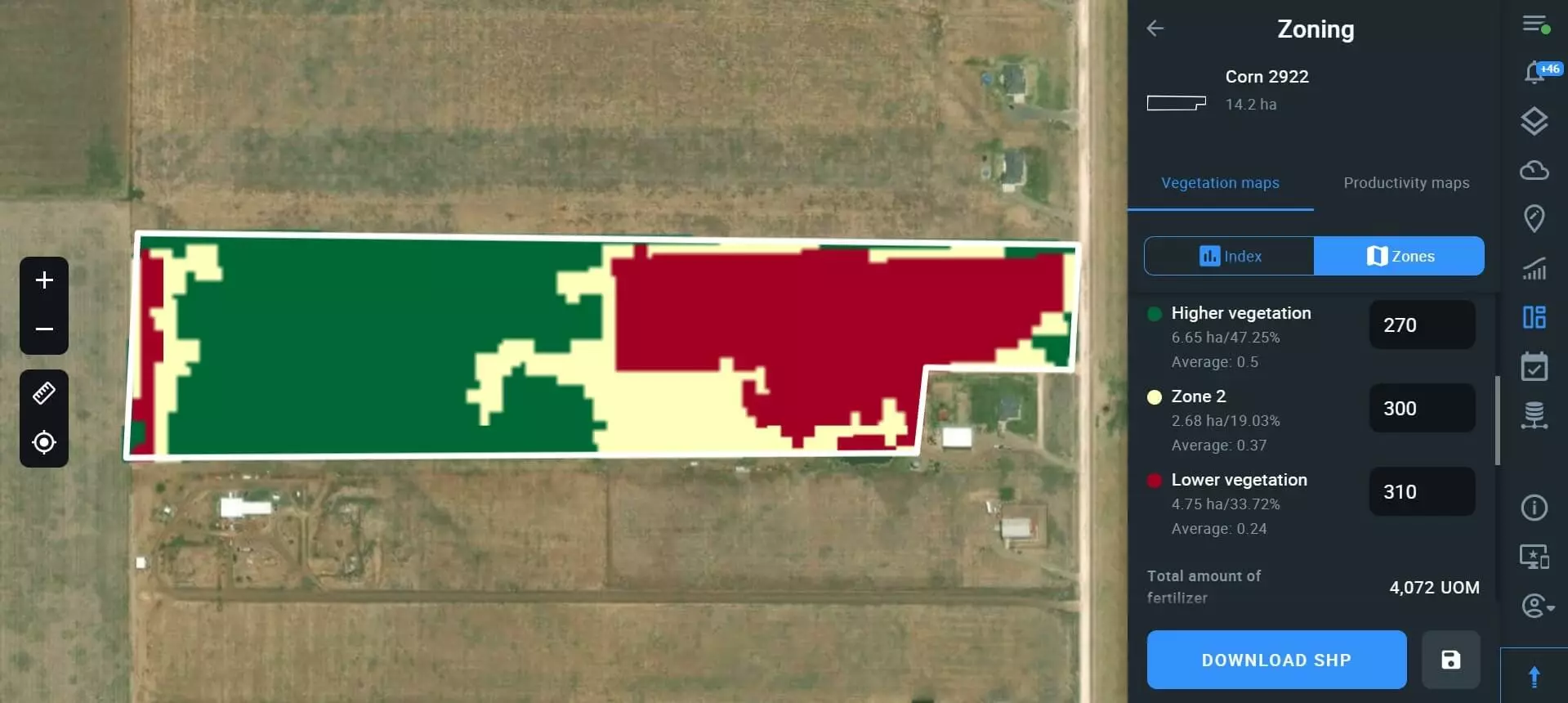
Yield Monitoring And Mapping In Precision Agriculture
When creating a field map, it is necessary to consider the environment’s condition to obtain objective data, such as landscape, earth, and weather. Therefore, GPS and satellite remote sensing are used for this. Thus, the maps display all the field nuances and harvest state. Based on such a precision agriculture yield map, EOSDA Crop Monitoring functionality allows growers to effectively monitor the readiness of crops for harvest with the help of vegetation indices. Thus, the NDRE index is excellent for such purposes, which more clearly shows the state of vegetation in the later stages of culture’s development. It has to analyze the vegetation along with the entire depth of foliage, not just analyze the surface as NDVI does.
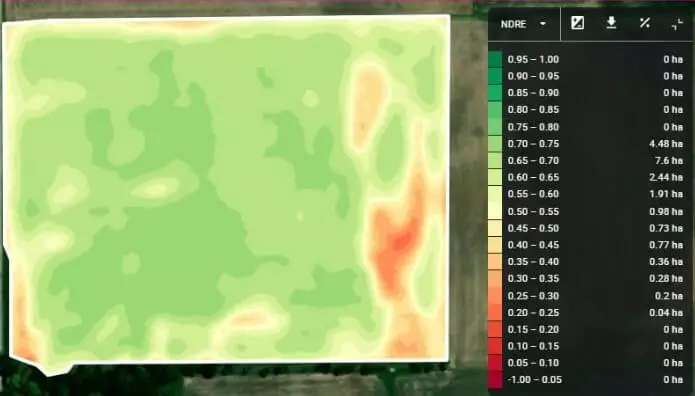
Historical weather and field data allows farmers to predict crop yields. At the same time, such data must be accurate. With precision farming API solutions by EOSDA Crop Monitoring, you can get custom solutions on yield prediction. Contact our sales team via sales@eosda.com and get the detained information.
Micro Irrigation (Drip Irrigation)
A micro-irrigation system allows growers to effectively plan the field’s irrigation by identifying areas with high or low soil moisture. Precision agriculture irrigation makes it possible to carry out variable rate irrigation (VRI) to vary the water supply volume for different field parts. This level of control can significantly improve irrigation efficiency and result in significant water savings. One of the indexes used in EOSDA Crop Monitoring is NDMI. The index shows the crop water stress level in the selected field. With it, farmers can quickly identify areas of the field that need additional watering, regions of flooding, or areas with excessive moisture.
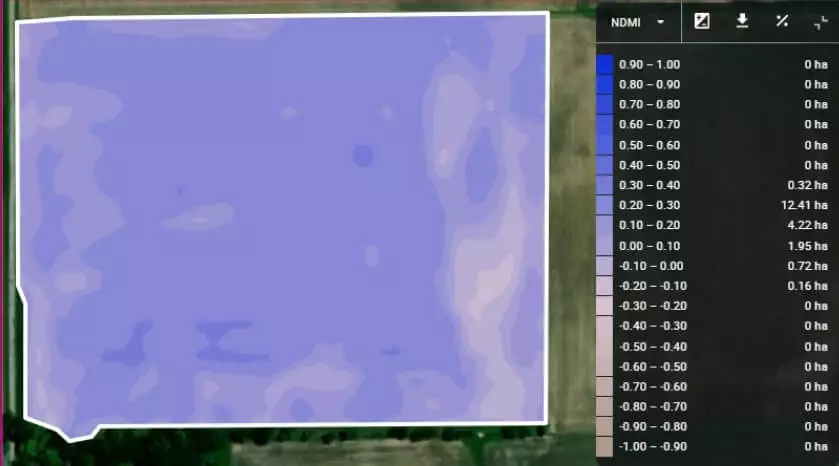
Site-Specific Crop Management (SSCM)
It is an agricultural management concept based on monitoring, counting, and reacting to crop variability between fields or within one area. Most current SSCM methods use accurate global positioning combined with site-specific measurements to quantify spatial changing field conditions. They are field data collection (such as pest presence) and remote sensing data (such as from satellites). EOSDA Crop Monitoring allows growers to use management zones in precision agriculture effectively. It can identify problem areas in a field with various possible pathogens: pests, fungus, fertilizer misuse, weeds, lack of moisture, etc. Once identifying a site with deviations, the farmer can send a scout to make a report based on the data collected during the inspection.
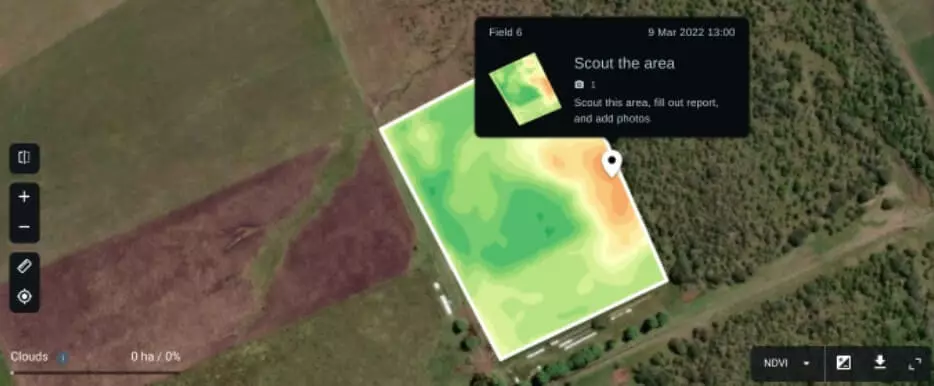
Soil Mapping In Precision Agriculture
Precision agriculture is impossible without quality ground mapping. With its help, farmers evaluate the soil properties, its chemical composition, the nutrients’ presence, etc. Soil mapping practice has existed for a long time, but modern technologies provide even more detailed information, making the new generation of digital maps more efficient.
For obtaining data, farmers use several types of precision agriculture sensors:
- optical sensors interpret data based on the coefficient of reflection of light from the ground;
- electrochemical sensors analyze the soil’s electrical characteristics, such as the potassium’s presence;
- mechanical sensors in contact with the ground determine the types and density of the elements contained in it.
IoT In Precision Agriculture
This system gives farmers more control over the field with dedicated data sensors, remote control, and an IoT platform. With IoT based precision agriculture, growers can control all the most critical information: from air temperature to soil conditions. Moreover, technology solves the problem of manually researching large farms by collecting data independently. Also, robotic systems are increasingly being introduced, which take on the part of a person’s work. For example, innovative irrigation technologies free up human labor for other tasks and use water more rationally.
Artificial Intelligence And Machine Learning
AI and precision agriculture are constantly being improved and provide new intelligent tools for managing agricultural production. Image-based pattern recognition systems allow applications to adjust the watering and nutrition of plants according to their type. For example, sprayers equipped with AI can recognize specific weeds and spray them without affecting the crops being grown.
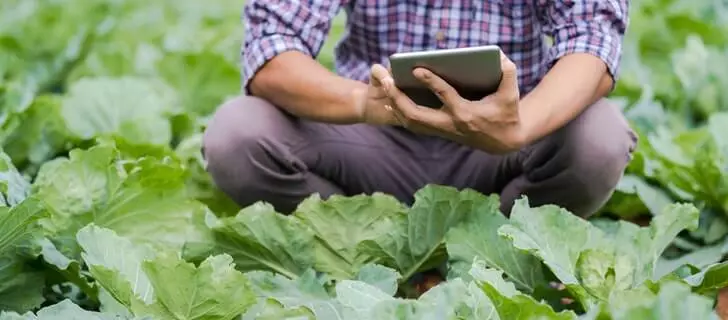
Challenges Of Precision Agriculture
Along with significant benefits, precision agriculture has several problems. Consider the main ones:
- This concept does not guarantee increased income as agriculture remains dependent on the weather. Therefore, it is necessary to carefully analyze the economic viability of precision agriculture.
- Most technologies provide soil and plant data but do not offer ready-made management solutions. Growers must independently determine the further development of the enterprise by analyzing the received information.
- With the introduction of computer technology in agribusiness, precision agriculture cybersecurity becomes more actual: attackers can steal data and even resources. Also, each user of such systems should take care of data protection.
However, strategically, this concept’s advantages far outweigh the disadvantages. So, this system is effective and promising.
Precision Agriculture To Maintain Sustainability
The goal of sustainable agriculture is to meet the current needs of society, primarily in food, without endangering the environment. Precision agriculture conserves resources by allowing farmers to cultivate crops and soil with maximum efficiency.
Precision farming uses resources only to the extent necessary to solve specific problems. It reduces the losses seen with traditional agricultural practices and promotes nutrient balance. Also, sustainable agriculture reduces pesticide resistance development.
For example, VRT reduces the dependence of production on chemicals, which contributes to the long-term productivity of the field. Optimization of transport costs reduces harmful substance emissions into the atmosphere.
Thus, precision sustainable agriculture is the most advanced farming system that allows solving both production and socially significant, including global, problems. Precision agriculture solutions like EOSDA Crop Monitoring enable everyone to solve these problems, regardless of production scale.
About the author:
Petro Kogut has a PhD in Physics and Mathematics and is the author of multiple scientific publications. He is the Soros Associated Professor as well as the head of the department of differential equations in the Oles Honchar Dnipro National University and has received a number of grants, prizes, honorary decorations, medals, and other awards. Prof. Dr. Petro Kogut is a science advisor for EOSDA.
Recent articles
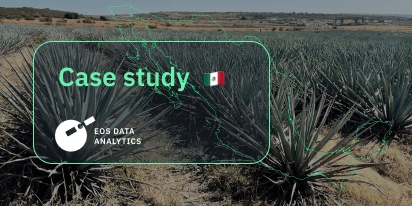
Digital Tools Improve Soil Health And Yields In Mexico
EOSDA and ITTA supported a Guanajuato farm with contour-line planning, monitoring tools, and practical guidance to reduce soil erosion and improve yields in the long run.

Analyze 2025 & Plan Your Best Year Yet: LandViewer Christmas Offer
It’s the most wonderful time of the year! The Christmas holidays are here, and so is your chance to analyze 2025 and plan a prosperous 2026 with more affordable Pro plans in LandViewer.

EOSDA Models Climate Change Impact On Sugarcane Yields
EOSDA modeled future temperature, rainfall, and other climate impacts on Veracruz sugarcane. The results help growers plan long-term adaptation strategies, including timing, varieties, and irrigation.